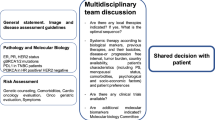Abstract
The effect and mechanisms of 17β-estradiol (E2) on breast cancer cells were studiedin vivo andin vitro, using 5 human breast carcinomas serially transplanted into nude mice. These carcinoma strains consisted of 4 estrogen receptor (ER) positive tumors and 1 ER negative tumor. Mice bearing these tumors were treated with an intramuscular injection of E2 at a dosage of 50 mg/kg and the tumor doubling time (Td) was calculated in days. The tumor growth was significantly stimulated by E2 in 3 out of the 4 ER positive tumors, the Td of the E2 treated groups being 17.6 days for MCF-7 (control: −17.8 days), 12.8 days for R-27 (control: −12.5 days∼14.5 days) and 10.4 days for Br-10 (control: 14.5 days), however, in the T-61 tumor, the growth was inhibited by E2 in a dose dependent manner. In the case of the ER-negative MX-1 tumor, the tumor cell growth was not affected by E2. Discrepancies between the effects of E2 on ER-positive tumors were further analyzed by examining the steroid hormone receptor status and conductingin vitro growth studies.In vitro clonogenic cell assay reproduced the antitumor activity of E2, indicating that E2 directly inhibits part of the cell growth of T-61 tumors. The above results suggest that this experimental system provides a useful tool for analyzing the mechanism of estrogen in breast cancer and that the clonogenic assay using ER positive specimens can help to identify breast cancers sensitive to estrogen therapy.
Similar content being viewed by others
References
Mouridsen H, Palshof T, Patterson J. Tamoxifen in advanced breast cancer. Cancer Treat Rev 1978; 5: 131–141.
Buzdar A, Kinberly C, Powell C, Sewa S. Treatment of advanced breast cancer with aminoglutethimide after therapy with tamoxifen. Cancer 1982; 50: 1708–1712.
Huggins C. Two principles in endocrine therapy of cancer: Hormone deprival and hormone interference. Cancer Res 1965; 25: 1163–1167.
Stoll BA. Hypothesis—Breast cancer regression under estrogen therapy. Br J Med 1973; 3: 446–456.
Hirohashi S, Shimosato Y, Kameya T, Nagai K, Tsunematsu R. Hormone dependency of a serially transplantable human breast cancer (Br-10) in nude mice. Cancer Res 1977; 37: 3184–3189.
Soule HD, Vazqueze J, Long A. A human cell line from a pleural effusion derived from a breast carcinoma. J Natl Cancer Inst 1973; 51: 1409–1416.
Kubota T, Kubouchi K, Koh J, Enomoto K, Ishibiki K, Abe O. Human breast carcinoma (MCF-7) serially transplanted into nude mice. Jpn J Surg 1983; 13: 381–384.
Nawata H, Bonzert D, Lippman M. Isolation and characterization of a tamoxifen resistant cell line derived from MCF-7 human breast cancer cells. J Biol Chem 1981; 256: 5016–5021.
Fukutomi T, Kubota T, Ikeda T, Enomoto K, Ishibiki K, Abe O. Experimental study on hydroxytamoxifen. J Jpn Soc Cancer Ther 1986; 21: 50–59.
Brünner N, Spang-Thomsen M, Nielsen A. Effect of 17β-estradiol on growth curves and flowcytometric DNA distribution of two human breast carcinomas grown in nude mice. Br J Cancer 1983; 47: 641–647.
Ovejera AA, Houchens DP, Barker AD. Chemotherapy of human tumor xenografts in genetically athymic mice. Ann Clin Lab 1978; 8: 50–56.
Geran R, Greenberg NH, MacDonald MM. Protocols for creening chemical agents and natural products against animal tumor and other biological system. Cancer Chemother Rep 1972; 3: 51–61.
Salmon SE, Hamburger AW, Soehnlen B, Durie BG, Alberts DS, Moon TE. Quantitation of tumor stem cells to anticancer drugs. New Engl J Med 1978; 298: 1321–1327.
McGuire WL, De la Garza M, Chamness GC. Evaluation of estrogen receptor assays in human breast cancer tissue. Cancer Res 1977; 37: 637–639.
Powell B, Garola RE, Chamness GC, McGuire WL. Measurement of progesterone receptor in human breast cancer biopsies. Cancer Res 1979; 39: 1678–1682.
Garola RE, McGuire WL. An improved assay for nuclear estrogen receptor in experimental and human breast cancer. Cancer Res 1977; 37: 3333–3337.
Lowry OH, Rousenbrough NJ, Farr AL, Randall RJ. Protein measurement with the folin phenol reagent. J Biol Chem 1951; 193: 265–275.
Umans RS, Weichselbaum RP, Johnson CM, Little JB. Effects of estradiol concentration on levels of nuclear estrogen receptors in MCF-7 breast tumor cells. J Steroid Biochem 1984; 20: 605–609.
Kubouchi K. Experimental and clinical study on endocrine therapy for breast carcinoma with special reference to nuclear estrogen receptor. Nippon Geka Gakkai Zasshi (J Jpn Surg Soc) 1984; 85: 1405–1417. (in Japanese with English Abst.)
Landeghem AAJ, Poortman J, Nabuurs M, Thijssen HH. Endogeneous concentration and subcellular distribution of estrogens in normal and malignant human breast tissue. Cancer Res 1985; 45: 2900–2906.
Matelski H, Huberman M, Zipoli T, Greene R, Lokich J. Randomized trial of estrogen vs. tamoxifen therapy for advanced breast cancer. Am J Clin Oncol 1985; 8: 128–133.
Seibert K, Shafie S, Huff K, Lippman ME. Clonal variation of MCF-7 breast cancer cellsin vitro and in athymic nude mice. Cancer Res 1983; 43: 2223–2239.
Fukutomi T, Kubota T, Ikeda T, Enomoto K, Ishibiki K, Abe O. Experimental combined hormone therapy on human breast carcinomas serially transplanted into nude mice. Jpn J Cancer Res (Gann) 1986; 77: 92–97.
Dembinski C, Leung CKH, Shiu RPC. Evidence for a novel pituitary factor that potentiates the mitogenic effect of estrogen in human breast cancer cells. Cancer Res 1985; 45: 3083–3089.
Lippman ME, Dickson RB, Kasid A. Autocrine and paracrine growth regulation of human breast cancer. J Steroid Biochem 1986; 24: 147–154.
Author information
Authors and Affiliations
Rights and permissions
About this article
Cite this article
Fukutomi, T., Yamaguchi, K., Kubota, T. et al. The effects of estrogen on human breast carcinomas serially transplanted into nude mice. The Japanese Journal of Surgery 19, 718–725 (1989). https://doi.org/10.1007/BF02471723
Received:
Issue Date:
DOI: https://doi.org/10.1007/BF02471723




